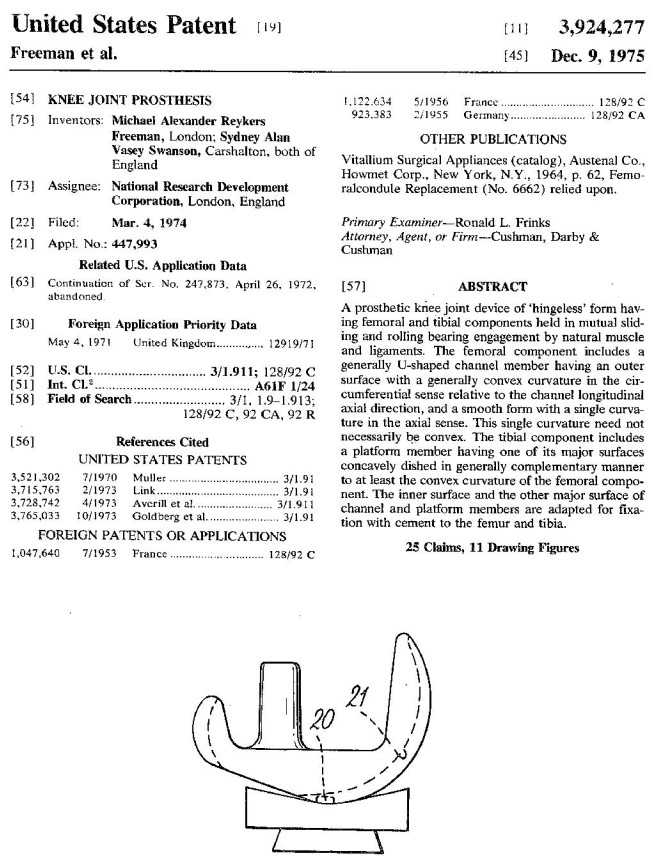About us

One of the top labs for orthopaedic research worldwide is the Imperial College London Biomechanics Group. The division was founded in 1965 when surgeon Michael Freeman and engineer Alan Swanson joined forces to address challenges in osteoarthritis and orthopaedic surgery. Their fruitful collaboration led to one of Imperial’s first commercial patents, for a knee replacement system known as the Freeman-Swanson knee. This design is the forerunner of several implants that are currently available on the market. Freeman was an orthopaedic physician, but he also held an office at Imperial in the Department of Mechanical Engineering. Given that both his brother Ralph and father Ralph were well-known civil engineers who created the Humber Bridge and the Sydney Harbour Bridge, he clearly felt at home among engineers.
Since its founding, the group has been conducting a wide range of successful research and projects. It brings together a team of professionals from engineering and medicine who are passionate about developing innovations in the disciplines of orthopaedic surgery and biomechanics, as well as improving products and services. Three cutting-edge labs—a cadaver lab, an additive manufacturing lab, and an x-ray microscopy lab—are the focal points of the organisation. With the researchers from MSk Lab, materials scientists in the Department of Materials, structural engineers in the Department of Civil and Environmental Engineering and engineers in the Department of Bioengineering the group enjoys strong interdepartmental ties that offer unparalleled support across the engineering and medical disciplines.


